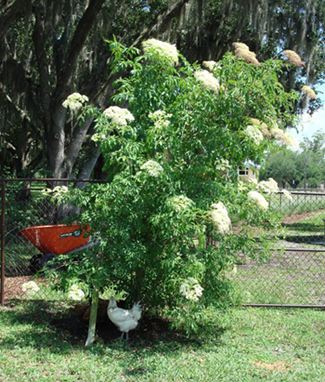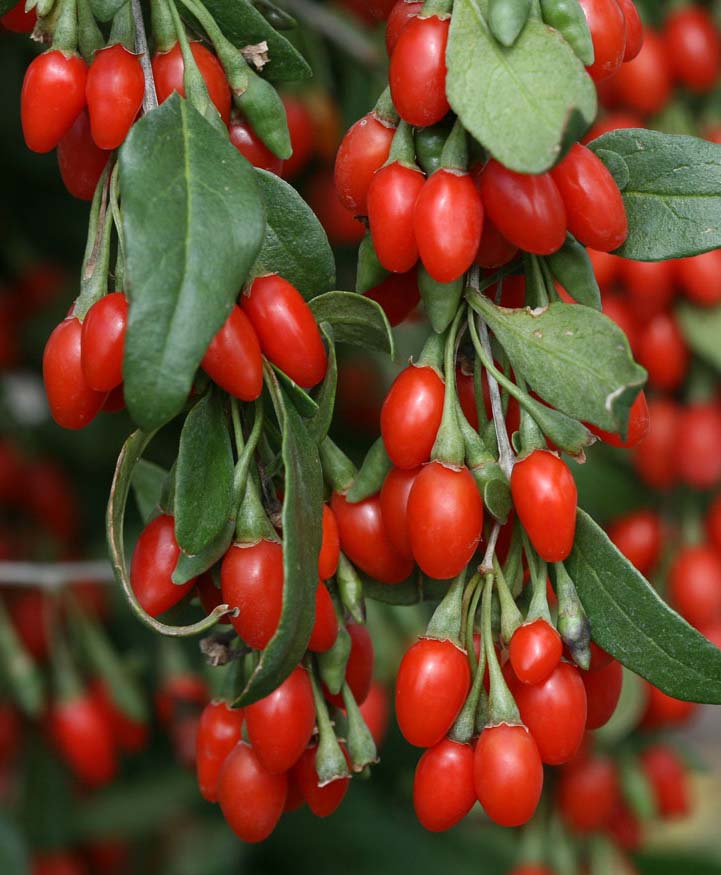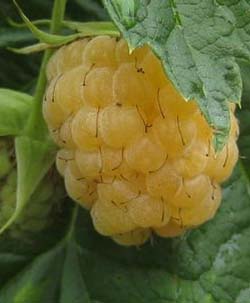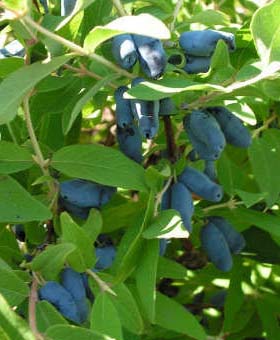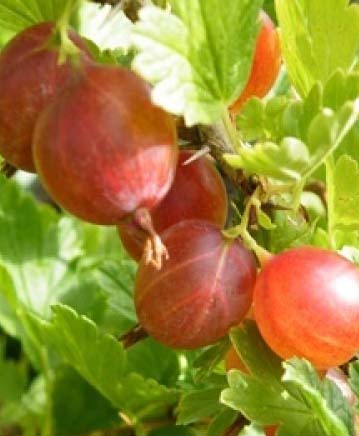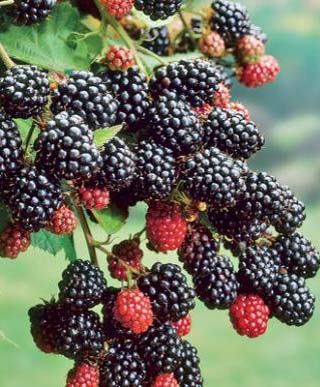





Elderberry
Sambucus canadensis
Sambucus canadensis
Growing Conditions
Sun exposure: full sun
Water: supplemental water should be given during prolonged dry periods in the summer
Soil: prefers moist, well-drained, slightly acidic soil; but will tolerate a wide range of soil texture, fertility, and acidity
Nutrient requirements: apply 1/2 to 1 pound of 10-10-10 fertilize in early April
Water: supplemental water should be given during prolonged dry periods in the summer
Soil: prefers moist, well-drained, slightly acidic soil; but will tolerate a wide range of soil texture, fertility, and acidity
Nutrient requirements: apply 1/2 to 1 pound of 10-10-10 fertilize in early April
Care and Pruning
In late winter to early spring while the plants are dormant, remove all dead, broken or weak canes, plus all canes more than three years old. Our plants should flower and fruit next year, and can reach full size in 3-4 years. Because of their shallow roots, they benefit greatly from mulching. Cross polination is needed to produce fruit. You can rely on the bees and wild trees, or plant a second tree nearby
Fruit Season
Berries ripen in July and August. Harvest the whole cluster of fruit when all the berries are fully colored.
Uses for Flowers and Fruit
Flowers are steeped to make elderberry tea. The tea is especially useful when trying to get over a cold or flu. The berries are an important source of food for many kinds of songbirds. High in Vitamins A, B6, and C, calcium, and iron. Elderberry juice or syrup is often used to treat the flu and common cold.
